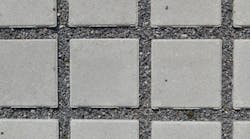Green infrastructure could be a line of defense against the floods La Niña’s unstable weather can bring to Australia. During the last several years, floods have created havoc for communities there, causing poverty and hardship. One form of this infrastructure that engineers at the University of South Australia are exploring is permeable pavement that can store water and slow flooding.
“I’ve just been out in the area that was affected by the floods,” said Sebastian Pfautsch, associate professor in urban studies and research theme coordinator at Western Sydney University. “We had two La Niña years in a row. Through climate change, the air can hold more moisture. We had massive downpours. It’s like shoestrings of water. For days on end, you have water falling in large volumes.”
“Animals drown,” Pfautsch said. “Vegetation is dying because of anoxic conditions. We see a lot of soil being lost from agricultural land. It was so wet the chickens couldn’t go out.”
These floods also damage roads, leading local residents to fill potholes unsafely, Pfautsch said.
”We travel on bitumen roads. We’ve been looking at resurfacing costs of $1 million AUD for country roads for one kilometer.”
Studying the Storms
After the storms, billions of dollars are needed to repair roads nationally. Faced with this crisis, the research paper from the University of South Australia, “Permeable Pavements for Flood Control in Australia: Spatial Analysis of Pavement Design Considering Rainfall and Soil Data,” explores a promising solution — but city councils that govern Australian communities may not be able to invest extensively in it.
The study used DesignPave v2.0 software to model the base-course-layer thickness necessary to reduce flood intensities in 107 cities or towns in Australia during 30-minute rainstorms.
The hydraulic analysis considered soil characteristics, pavement surface area, surface and soil infiltration rates, rainfall intensities and pavement materials.
Permeable pavements typically have a permeable upper surface with a layer of 2- to 6-mm-diameter bedding gravel under it. Underneath it is a base-course layer. This is above the natural soil (the subgrade).
When rainfall intensity is higher and soil permeability is lower, roads require thicker base-course layers, the software showed.
For high-permeability soils, a base-course-layer thickness of 100-110 mm was generally enough if the rainfall intensity was up to 50 mm/h. A thickness of 130 mm was required for intensities up to 60 mm/h. For higher intensities than that, the thickness increased linearly.
For low-permeability soils, there is a linear relationship between the required base-course-layer thickness and rainfall intensity. Sandy soils tend to be highly permeable; the required design thickness varies based on their relative amounts of fine particles and clay. The results for different clayey soils tend to be similar to each other.
Pavers Solutions
The researchers focused on permeable interlocking concrete pavers, which are one type of permeable pavement, because they can be designed for flood control, water quality improvement and water harvesting. They also can support traffic shortly after construction.
The recommended base-course layer consisted of uniform granular material, which has a high permeability and a high water-storage capacity and is recommended for residential environments.
The model assumed the pavement had a surface layer that was 80 millimeters thick and was suitable for light traffic.
“Our paper is about managing water in the urban system,” said Mizanur Rahman, professor of geotechnical engineering at the University of South Australia and coauthor of the paper. “If you have an urban system, up to 91% of water can run off to drainage of the stormwater system. We are trying to reduce the water to 30%. 70% of the water would be stored in the permeable-pavement system. That water we can use for many household uses, gardening and agriculture. That reduces the water demand.”
Rahman continued, “a permeable paver is basically a storage tank that can store a lot of water. Depending on how much water we need, we can increase the depth of the subgrade. That would increase the storage size.”
Paving the Way
Australian councils have some permeable paving projects going on already, but progress is slow. According to Rahman, there is a lack of awareness of permeable pavements in the design and engineering community in Australia.
Pfautsch said the recent flooding has been “an extreme confluence of climate change, urban construction, capping of land, and not knowing how to work with water in the landscape… because of political and financial incentives, these floodplains have now been built upon with these new suburbs.”
There are other alternative types of green infrastructure that can provide flooding reduction at a lower cost than permeable pavements, according to Pfautsch.
“The most practical and effective type of infrastructure in any Australian city is parks. Because they are on public land, they get managed,” Pfautsch said. “There is a well-known park cool-island effect. After that, of course, it’s trees on private land. They provide aesthetics. They allow us to mentally relax. They provide food and habitat for animals. The larger the park, the wider the cool-island effect can travel.”
Other parts of the world such as Germany, Japan and the United States routinely use permeable paving and/or other green infrastructure. Planting grass that increases water absorption is one example. According to The Guardian, the United Kingdom is considering planting a type of grass that is a natural hybrid of rye and fescue and reduces runoff. It creates more pores in the soil, thereby improving water storage.






